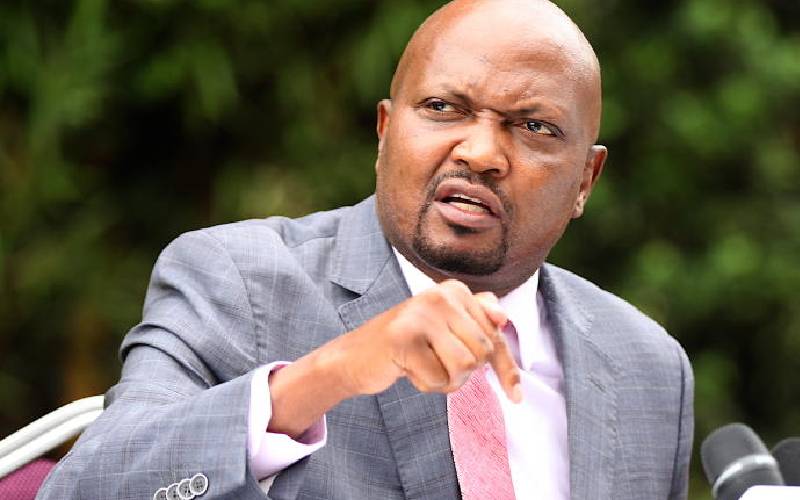Trade Cabinet Secretary Moses Kuria has declared that any 250ml bottle of liquor retailing for less than Ksh.250 is prohibited.
CS Kuria indicated during a multi-agency meeting on Monday at Kirubia Stadium in Tharaka Nithi County that the decision will assist regulate the nation's rising alcohol consumption and reduce the creation of counterfeit drinks.
"Any wines and spirits [where] 250 ml is sold for less than Ksh.250 are illegal," he stated.
.jpg)
"We did the math with KRA and know the core structure, so anyone selling liquor for less than Ksh.250 should be treated as a suspect immediately."
Did you read this?
CS Kuria further stated that he has previously provided a report to the Finance Committee in parliament.
He has also promised to publicize the agreed rates with Kenya Revenue Authority (KRA) acting commissioner general Risper Simiyu.
"I've already told the Finance and Accommodation committee that any wine or spirits should not sell the 250ml bottle for less than the cost price," he stated.
"And that cost price will be published by KRA on a regular basis."
The Trade CS has encouraged liquor consumers affected by the price change to switch to drinking milk because it is cheaper and promotes a healthy lifestyle.
"Even if you complain that liquor is too expensive, at least there is milk, which is less expensive." Start drinking milk if you think Ksh.250 is too much."
CS Kuria's remarks came amid the government's aggressive national crackdown on alcohol usage, spearheaded by Deputy President Rigathi Gachagua.

According to NACADA data, the Western area of Kenya has the highest rate of alcoholism in the country, at 23.8%, followed by the Coastal region at 13.9% and Central at 12.8%.
Regarding alcohol consumption, the Western area has the highest rates of chang'aa and traditional brew consumption. In contrast, the Central region has the highest rate of potable spirits consumption (4.1%), followed by the Coast (3.2%) and the Rift Valley (3.1%).
The Central area has the highest rate of current tobacco use at 11.9%, followed by the Coast (10.8%) and Eastern (10.7%).









